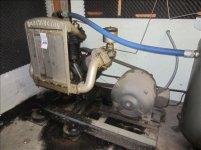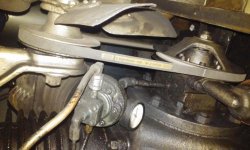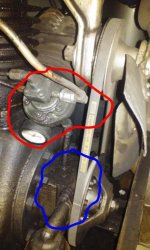pmtool
Cast Iron
- Joined
- Jul 10, 2011
- Location
- Portland, OR
This is an old 20 HP Worthington reciprocating compressor. It starts up fine and seem to run well but after it is cut off by the pressure switch it leaks are back from the receiver tank and back out the compressor. As you can see in the photo there is the large compressor outlet hose that fills the tank, and on the top of the tank there is a small line that goes back to the compressor. What does this line do? It sounds like all the air that is leaking out in going through the small tubing. I imagine I have a sticky check valve somewhere? The compressor has been sitting for a while. You can also see from the photos that I probably have a oil leak somewhere as well. I am sure that to someone that knows compressors this is a simple problem but I have little experience with compressors.
Thanks!


Thanks!






